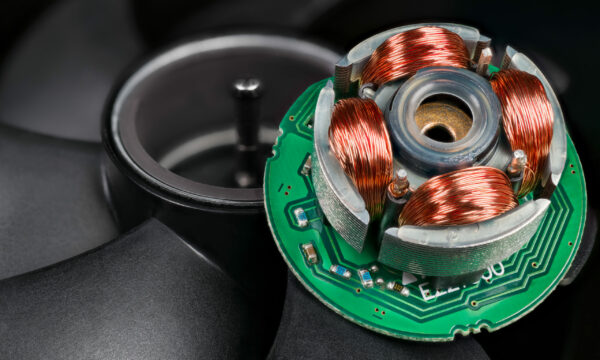New Way’s robust air bearing product lines offer a superior alternative to a traditional ball bearing or roller bearing solutions, no matter the application. Air bearings have found a home in a wide variety of applications, including:

- Precision Manufacturing Industry
- Medical Imaging
- Automotive Testing
- Metrology
- Shaft Balancing
Numerous industries have discovered the value of frictionless, non-contact motion, and we hope you’ll do the same!
Frictionless Motion
By replacing traditional metal contact bearings with a thin layer of air, friction between the rail and the guide is almost entirely eliminated. The frictionless motion inherent to air bearings is a boon for industries where accurate measurements are vital, and sources of error are unacceptable.
Within the automotive industry, round air bearings are being put to use as the foundational technology for frictionless dynamometers. This provides racing teams with true data on torque and horsepower, whereas the frictional forces within ball bearings can skew measurements. In addition, air bearings have been incorporated into automotive wind tunnels, allowing Formula 1 teams to accurately set road velocity for a given test.
True Positioning
One of the foremost benefits of removing friction in your bearing system is the elimination of positioning errors induced by the internal inertia of a ball bearing system. As the bearings roll within their guide rails, they build up momentum the faster they go. This can cause a positioning system to overshoot its target, further introducing hysteresis errors which compound over time.
As demonstrated by our academic partners at MIT, air bearings demonstrate 10x greater straightness and accuracy of motion than competing roller bearing products. In the inspection of semiconductor wafers, precise and repeatable motion is a must. This is why they turn to New Way’s linear motion products.
Flatness Control
Adding to the complications of a traditional system, ball bearings and their guide rails wear down over time, creating uneven surfaces. This degradation impacts the smooth and flat operation of contact roller or rotating plate systems. Contrast this with an air bearing system, where New Way’s Porous Media Technology™ ensures a flatness up to 75nm/mm.
Tunable flatness control is already being utilized through New Ways’s air turns, a system for non-contact conveyance of films and other flexible substrates in roll-to-roll processes. By allowing for air pressure and fly height to be easily adjusted, web height variation in your material may be reduced down to <5µm/55mm.
Our partners at IBS Precision Engineering already make use of our bearings in their own metrology products. They recently demonstrated a novel real-time, in-situ interferometry technique for measuring flatness and web stability of moving flexible films, thanks to the air bearings fluid film layer.
Speed
Traditional ball bearing systems are limited in how fast they can operate. This is both a function of mechanical friction, and the need to keep them cooled below a certain temperature. With New Ways Air Bearings, heat and friction are a non-factor, allowing for rotational and linear speeds orders of magnitude faster than those allowed by ball or roller bearings. Air Bearings exhibit a tenfold increase in speed over their traditional counterparts, reaching speeds of 50 m/s while generating virtually no noise.
The air bearings speed capability already shows promise in medical imaging, allowing for:
- Reduced time for CT scans
- Minimized downtime for maintenance
- Greater patient comfort
Noise
With frictionless motion comes silent operation; no rubbing bearings equals virtually no noise! Anybody who spends their life on a factory floor can tell you just how crucial noise reduction is to create an employee-friendly environment, and New Way Air Bearings provide one more avenue to do so.
Many people will tell you that undergoing a CT or MRI scan is anxiety-inducing, not only due to the claustrophobia, but also the constant sound of the rotating components required to produce the images. Medical imaging devices built on air bearings eliminate rotating acoustics and create a more patient-friendly experience, as well as increasing scan speeds for greater throughput.
Reliability
Chief among the air bearing’s strengths is its reliability and low maintenance requirements when compared to a roller bearing system. The movement of one surface against another inevitably causes wear and tear, and ball bearings are at risk of spalling out.
This perpetual contact force necessitates constant lubrication to prevent the build-up of heat and the degradation of bearings or the unit housing. Even then the lubricant must be continually cycled and replaced, requiring downtime which reduces productivity. Since air bearings utilize a frictionless air barrier for its dynamic medium, there’s no material to wear down and no required upkeep.
Continuing along this safety-minded path, one might ask; what happens should an air bearing be cut off from its air supply? What if the facility loses power? Because the entire bearing face provides positive pressure, the airflow slowly tapers off, causing the assembly to come to rest on the bearing pads. Even at high speeds, the soft carbon will act as an ablative layer, protecting your precision-machined guideway from damage. Amazingly, a scratched carbon bearing is still fully operable, even after 50 crashes.
To learn more about the benefits of air bearings, please read our Application and Design Guide, and If New Way Air Bearings sounds like an ideal fit for your company, please reach out to us!



